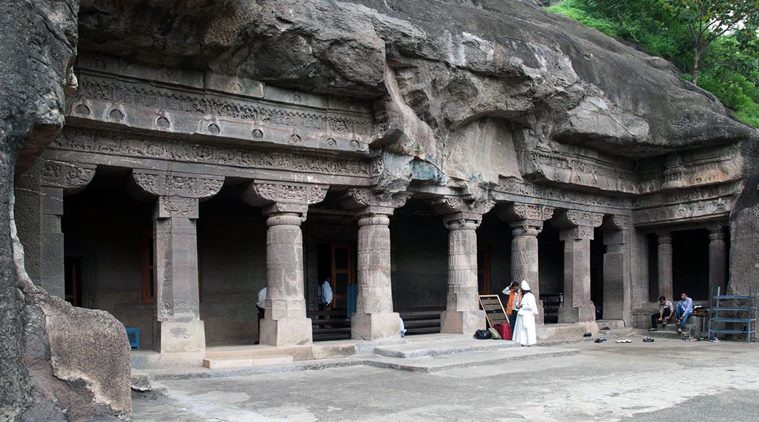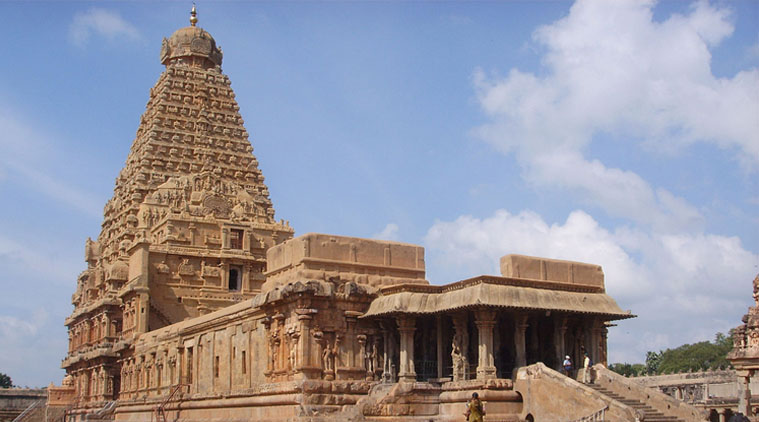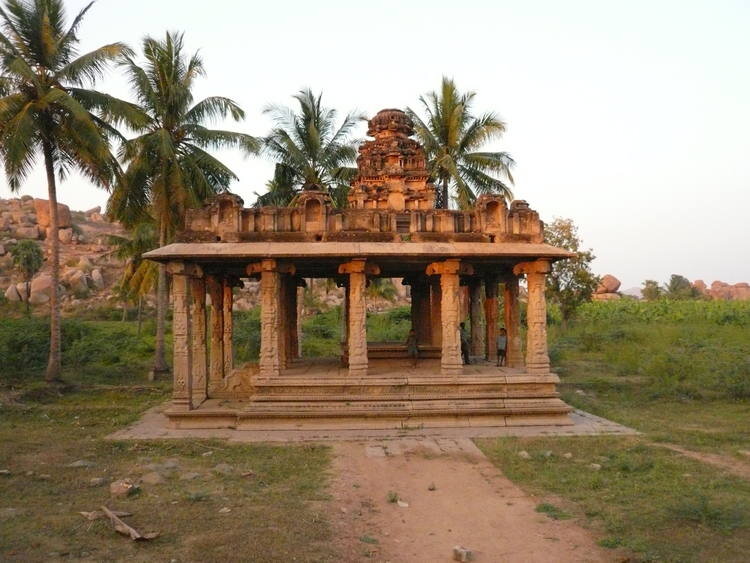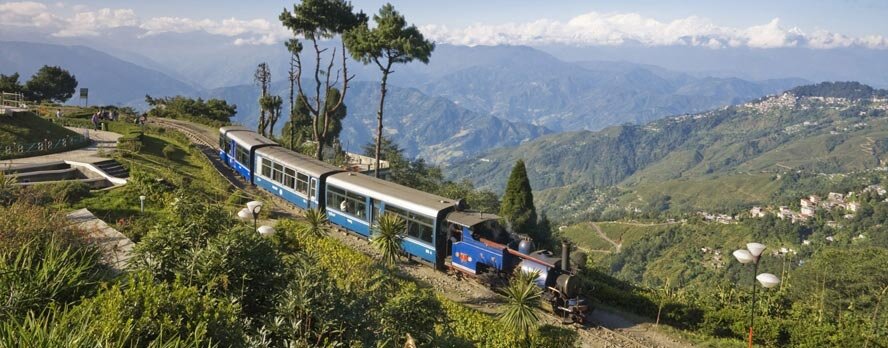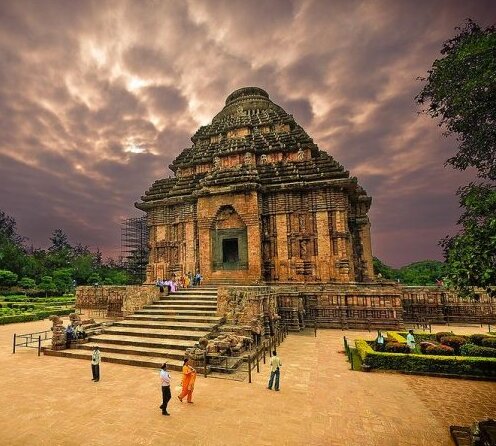World Heritage Sites in India
- A World Heritage Site is a place that is listed by UNESCO for its special cultural or physical significance. The list of World Heritage Sites is maintained by the international 'World Heritage Programme', administered by the UNESCO World Heritage Committee.
- The United Nations Educational, Scientific and Cultural Organization (UNESCO) seeks to encourage the identification, protection and preservation of cultural and natural heritage around the world considered to be of outstanding value to humanity.
- This is embodied in an international treaty called the Convention concerning the Protection of the World Cultural and Natural Heritage, adopted by UNESCO in 1972.
- India has 38 world heritage sites that include 30 Cultural properties, 7 Natural properties and 1 mixed site.
United Nations Educational, Scientific and Cultural Organization
- It was founded in 1945 to develop the “intellectual and moral solidarity of mankind” as a means of building lasting peace.
- It is located in Paris, France.
Cultural Sites in India (30)
- Agra Fort (1983)
- 16th-century Mughal monument
- Fortress of red sandstone
- It comprises the Jahangir Palace and the Khas Mahal, built by Shah Jahan; audience halls, such as the Diwan-i-Khas
- Ajanta Caves (1983)
- Archaeological Site of Nalanda Mahavihara at Nalanda, Bihar (2016)
- Remains of a monastic and scholastic institution dating from the 3rd century BCE to the 13th century CE.
- Includes stupas, shrines, viharas (residential and educational buildings) and important artworks in stucco, stone and metal.
- Considered to be the most ancient university of the Indian Subcontinent.
- Buddhist Monuments at Sanchi (1989)
- It is the oldest Buddhist sanctuary in existence and was a major Buddhist centre in India until the 12th century A.D.
- Consists of monolithic pillars, palaces, temples and monasteries) all in different states of conservation most of which date back to the 2nd and 1st centuries B.C.
- Champaner-Pavagadh Archaeological Park (2004)
- Prehistoric (chalcolithic) sites, a hill fortress of early Hindu capital, and remains of the 16th-century capital of the state of Gujarat.
- Also includes, among other vestiges, fortifications, palaces, religious buildings, residential precincts, agricultural structures and water installations, from the 8th to 14th centuries.
- The Kalikamata Temple on top of Pavagadh Hill is considered to be an important shrine, attracting large numbers of pilgrims throughout the year.
- The site is the only complete and unchanged Islamic pre-Mughal city.
- Chhatrapati Shivaji Terminus (formerly Victoria Terminus) (2004)
- Example of Victorian Gothic Revival architecture in India, blended with themes deriving from Indian traditional architecture. The building, designed by the British architect F. W. Stevens, became the symbol of Bombay as the ‘Gothic City’ and the major international mercantile port of India. The terminal was built over 10 years, starting in 1878, according to a High Victorian Gothic design based on late medieval Italian models. Its remarkable stone dome, turrets, pointed arches and eccentric ground plan are close to traditional Indian palace architecture.
- Churches and Convents of Goa (1986)
- The churches and convents of Goa, particularly the Basilica of Bom Jesus indicate commencement of evangelization in Asia.
- The Basilica of Bom Jesus also houses the sacred tomb of St. Francis Xavier.
- These monuments are well known for spreading- Manueline, Mannerist and Baroque art in major parts of Asia.
- Elephanta Caves (1987)
- Located at Elephanta island or island of Gharapuri(literally- ‘City of Caves’) in the Sea of Oman, close to Mumbai.
- Contains a collection of rock art connected to the Shaivite cult.
- It is a vital symbol of the greatness of Indian art, especially the huge high reliefs in the main cave.
- They were constructed around the mid-5th to 6th centuries AD.
- Ellora Caves
- Fatehpur Sikri (1986)
- Built during the second half of the 16th century by Emperor Akbar, Fatehpur Sikri or ‘The City of Victory,’ also served as the capital of the Mughal empire for a short time period.
- It contains an array of monuments and temples, including one of the largest mosques in India- the Jama Masjid.
- Great Living Chola Temples (1987, 2004)
- Built by kings of the Chola empire, these temples manifest the precision and perfection of the Cholas in architecture, sculpture, painting and bronze casting.
- This site includes three 11th and 12th- century temples: Brihadisvara Temple at Thanjavur, Brihadisvara Temple at Gangaikondacholisvaram and Airavatesvara Temple at Darasuram.
- The Temple of Gangaikondacholisvaram built by Rajendra the First in 1035 and the Airavatesvara Temple built by Rajaraja the Second, feature vimana (sanctum tower) of 53m and 24m respectively.
- Brihadisvara and Airavatesvara temple
- Group of Monuments at Hampi (1986)
- This site was the last capital of the kingdom of Vijaynagar.
- These Dravidian temples and palaces were built by rulers of Vijaynagar between the 14th and 16th centuries.
- In 1565, the city was captured by Deccan Muslim Confederacy and pillaged for a period of 6 months, before being abandoned.
- Group of Monuments at Mahabalipuram (1984)
- This group of monuments was founded by Pallava kings in the 7th and 8th centuries along the Coromandel coast of Bay of Bengal.
- These temples boast of intricate and unique architectural styles in the form of- rathas (temples in the form of chariots), mandapas (cave sanctuaries) and giant open-air reliefs such as- ‘Descent of the Ganges.’
- It also encloses the temple of Rivage, with thousands of sculptures dedicated to the glory of Shiva.
- Group of Monuments at Pattadakal (1987)
- Pattadakal in Karnataka showcases a unique blend of architectural forms from northern and southern India, achieved under the Chalukya dynasty during the 7th and 8th centuries.
- It comprises nine Hindu temples as well as a Jain sanctuary including the Temple of Virupaksha, a masterpiece built in c.740 by Queen Lokamahadevi to commemorate her husband’s victory.
- Hill Forts of Rajasthan (2013)
- This site includes six majestic forts situated in Chittorgarh, Kumbhalgarh, Sawai Madhopur, Jaisalmer, Jaipur and Jhalawar, all situated in the state of Rajasthan.
- The magnificent and stalwart exterior of the forts manifests the lifestyle and nature of the Rajput rule over this land from 8th to 18th centuries.
- These fortifications enclose urban centres, palaces, trading centres and temples, where various forms of art and culture flourished.
- Some of the urban centres, as well as most of the temples and other sacred places, have survived as the forts used natural resources such as- hills, deserts, forests etc for protection.
- Historic City of Ahmedabad (2017)
- Located on the eastern bank of Sabarmati river, this city was founded by Sultan Ahmad Shah in the 15th century. It also served as the capital of the state of Gujarat for centuries.
- This city is a testimony to the harmonious existence of diverse religions on this land, exhibited by its architecture which includes the famous Bhadra citadel accompanied by various mosques, tombs as well as numerous Hindu and Jain temples.
- The urban fabric consists of densely- packed traditional houses (pols) in gated traditional streets (puras).
- Humayun’s Tomb, Delhi (1993)
- Built-in 1570, it has long-standing cultural significance because it was the first garden-tomb to be constructed in India.
- This tomb was the inspiration behind several architectural innovations including the Taj Mahal.
- Jaipur City, Rajasthan (2019)
- Khajuraho Group of Monuments (1986)
- These temples were built during the Chandella dynasty, which reached at its pinnacle between 950 and 1050.
- Only 20 temples remain, belonging to two different religions namely-Hinduism and Jainism, including the famous Temple of Kandariya decorated with intricately and beautifully carved sculptures.
- Mahabodhi Temple Complex at Bodh Gaya (2002)
- This temple was earlier built by Emperor Asoka in the 3rd century B.C.However, the present structure dates back to the 5th or 6th centuries.
- It is one of the earliest Buddhist temples built entirely in brick and considered to be one of the four sacred sites associated with the life of Gautama Buddha.
- Mountain Railways of India (1999, 2005, 2008)
- This site includes three railways:
- Darjeeling Himalayan Railway
- Nilgiri Mountain Railway: This line, started in 1891 and completed till 1908, is a 46-km long metre-gauge single-track railway in Tamil Nadu.
- Kalka Shimla Railway
- Qutub Minar and its Monuments, Delhi (1993)
- Qutub Minar was built in red sandstone in the early 13th century, in Delhi.
- It is 72.5 m high, with diameters of 14.32 m and 2.75 m at its base and peak respectively.
- The tower is surrounded by various aesthetically-pleasing treasures, for instance- the Alai Darwaza built-in 1311 as well as two mosques including the Quwwatu’l-Islam, the oldest mosque in northern India.
- Rani-ki-Vav (the Queen’s Stepwell) at Patan, Gujarat (2014)
- Situated on the banks of Saraswati river, this stepwell was built as a memorial to a king.
- Stepwells are considered to be easily accessible underground water resources and storage systems, which have been constructed in the Indian subcontinent since the 3rd millennium B.C.
- This stepwell flaunts the Maru-Gurjara architectural style, designed in the form of an inverted temple to emphasize the sanctity of water and is endowed with more than thousand sculptures depicting a combination of religious, mythological and secular imagery.
- Red Fort Complex (2007)
- This was built as the palace fort of Shahjahanabad, the capital of Mughal Emperor Shah Jahan and is named after its immense walls of red sandstone.
- The Red Fort Complex in entirety, includes the Red Fort as well as Salimgarh fort built-in 1546 by Islam Shah Suri.
- Red Fort is a reflection of the acme of Mughal architectural innovation and craftsmanship. The planning of the palace is based on Islamic prototypes, but each structure mirrors architectural elements derived from a combination of Persian, Timurid and Hindu traditions.
- The row of pavilions are connected by a continuous water channel known as Nahr-i-Behisht (Stream of Paradise).
- Rock Shelters of Bhimbetka (2003)
- These shelters are located within the foothills of Vindhya range, on the southern edge of the central Indian plateau.
- Unearthed in the form of five clusters of natural rock shelters exhibiting paintings that date back to the Mesolithic, and other periods succeeding it.
- The cultural traditions of the inhabitants in surrounding areas are very similar to those displayed in the paintings.
- Sun Temple, Konarak (1984)
- Taj Mahal (1983)
- The Architectural Work of Le Corbusier (2016)
- This transnational serial property includes 17 sites spread across 7 countries stands as a testimony of a new form of architectural expression weaved with modern traditions.
- These sites, in totality, propagate ideals of the Modern movement and are also considered as a significant response to fundamental issues of architecture and society in the 20th century.
- Complexe du Capitole, Chandigarh, The Museum of Western Art in Tokyo (Japan), the House of Dr Curutchet in La Plata (Argentina), Unité d’habitation in Marseille (France) etc, are some of the well-known sites included in this property.
- The Jantar Mantar, Jaipur (2010)
- Built in the early 18th century, Jantar Mantar is designed to observe astronomical positions with the naked eye. A set of 20 main instruments are installed in this site to make accurate observations.
- It is a manifestation of astronomical skills and knowledge, dating back to the Mughal times.
- Victorian Gothic and Art Deco Ensembles of Mumbai (2018)
- This site includes a collection of public buildings designed in Victorian Neo-Gothic style in the 19th century and Art Deco style in the 20th century.
- Both the styles are intermingled with Indian architectural elements. For instance- The buildings designed in Victorian Neo-Gothic styles are endowed with balconies and verandas. Similarly, the Indo- Deco is a term used to describe the style emerged after adding Indian elements to Art Deco imagery and architecture.
Natural Sites in India (7)
- Great Himalayan National Park Conservation Area (2014)
- Located in western part of Himalayan mountains in the state of Himachal Pradesh, this Park is well known for its high alpine peaks, alpine meadows and riverine forests.
- It also encloses glacial and snow meltwater sources of several rivers as well as the catchment area.
- It is a biodiversity hotspot with 25 types of forests inhabited by myriads of faunal species, several of which are threatened.
- Kaziranga National Park (1985)
- Keoladeo National Park (1985)
- This wetland is located in the state of Rajasthan and served as a duck shooting reserve till the end of 19th century. However, soon enough the hunting ceased and the area was declared a national park in 1982.
- This National Park is home to 375 bird species and various other life forms. It also serves as a wintering ground to Palaearctic migratory waterfowl, critically endangered Siberian Crane as well as to globally threatened- Greater Spotted Eagle and Imperial Eagle.
- It is acclaimed for its resident population of non-migratory breeding birds.
- Manas Wildlife Sanctuary (1985)
- Manas Wildlife Sanctuary is a biodiversity hotspot located in Assam. It is a part of Manas Tiger Reserve and sprawls alongside Manas river.
- A range of forested hills, alluvial grasslands and tropical evergreen forests are responsible for the breathtaking beauty and serene environment of the site.
- It also provides a habitable environment to a range of endangered species such as- tiger, greater one-horned rhino, swamp deer, pygmy hog and Bengal florican.
- Nanda Devi and Valley of Flowers National Parks (1988, 2005)
- Both of these National Parks are exceptionally beautiful high-altitude West Himalayan landscapes and fall within the boundaries of the state of Uttarakhand.
- Nanda Devi National Park boasts rugged and high-mountain wilderness and is dominated by India’s second-highest mountain-the peak of Nanda Devi. The Valley of Flowers, in contrast, flaunts aesthetically pleasing meadows of alpine flowers.
- Numerous kinds of floral and faunal species reside in these parks, along with a significant population of globally threatened species including- Snow leopard, Himalayan Musk Deer etc.
- Sundarban National Park (1987)
- Western Ghats (2012)
- Western Ghats consist of a chain of mountains running parallel to India’s Western Coast and passing from the states of Kerala, Maharashtra, Goa, Gujarat, Tamil Nadu and Karnataka.
- They cover an immense area in a 1600 km long stretch and are interrupted only once by a 30km Palghat gap at around 11 degrees North.
- They also influence the Indian monsoon weather patterns that mediate the warm tropical climate of the region and act as a barrier to rain-laden monsoon winds that sweep in from the south-west.
- Western Ghats are also home to tropical evergreen forests, as well as to 325 globally threatened species.
Mixed Site in India (1)
- Khangchendzonga National Park (2016)
- Located in Sikkim, this National Park is dominated by the world's third-highest peak, Mount Khangchendzonga.
- The Park comprises steep-sided valleys, snow-
- clad mountains and various lakes and glaciers including the 26km long Zemu glacier, located around the base of Mount Khangchendzonga.
- It covers almost 25% of the state of Sikkim and ensures a habitable environment to various endemic as well as threatened, plant and animal species.
- Cultural Significance of Khangchendzonga National Park
